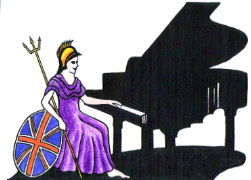Piano Removals, Storage in Glasgow, Lanarkshire G23 by West End Removers

UK Piano Page


West End Removers have been established since 1970 and are a family run business covering all aspects of the removal business.
During which time we have built a reputation as one of the best piano removers in the country moving pianos for most of the major musical institutes including the BBC, Royal Concert Hall, Royal Scottish Academy of Music and Drama and the Royal Scottish National Orchestra .
We can help you with removals and storageof many kinds of P
Kensington, London SW5
England
Kensington Piano removals and disposals operating
City of London, London SE13
England
Lewisham Piano Removals, Provide piano moving and
Camden Town, London WC1
England
Westminster,Central London piano moving and
City of London, London W6
England
W6-Hammersmith piano removals and disposals.
Camden, London NW3
England
Piano moving and disposing Camden and surrounding
Music Festival for performers and guests Our 10th
18-06-2022 01:30PM
The Morecambe Bay Piano Group was set up to extend
11-12-2021 02:00PM
The Morecambe Bay Piano Group was set up to extend
08-01-2022 02:00PM
The Morecambe Bay Piano Group was set up to extend
12-02-2022 02:00PM
Tuning Temperaments
How many piano tuning temperaments are there?
There are countless variations, but most fall within three major categories;
1. Meantone, which generally concentrated the dissonance into a few unusable intervals (often called "wolf" intervals), so that the others could be Just. These are often called "restrictive" tunings, since there are certain intervals that are not usable. Good intervals are really good, bad ones are really bad. The Meantone era was approx. 1400-1700
2. Well-Temperament, which gives more consonance to the most often used keys, and more dissonance to the lesser used ones. Though not equal, these tunings are "non-restrictive" because all intervals can be used. The intervals range from Just to barely acceptable. Well-temperament refers to a genre, not a specific tuning. The Well-Tempered era is approx. 1700-1880.
3. Equal Temperament, which spreads the dissonance equally among all intervals.
There is no difference in consonance or dissonance between any keys, thus, there are no good ones or bad ones. Equal temperament represents a complete average. Dates of its acceptance are debated, but there is ample evidence that it was widely available by 1900 and is the predominate tuning on keyboards, today.
r.